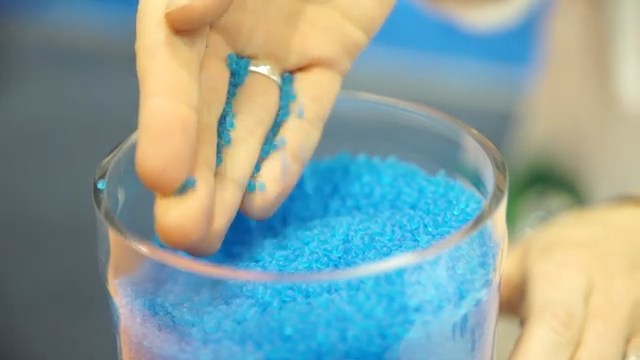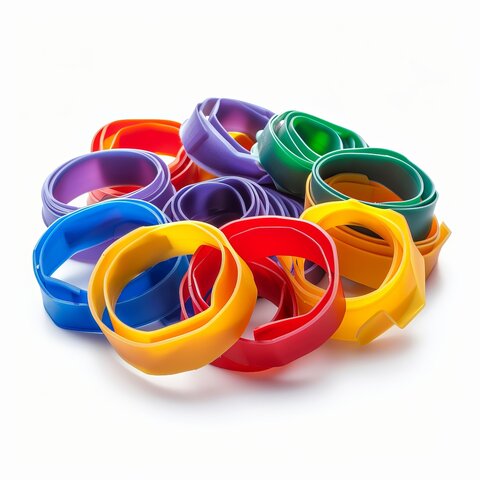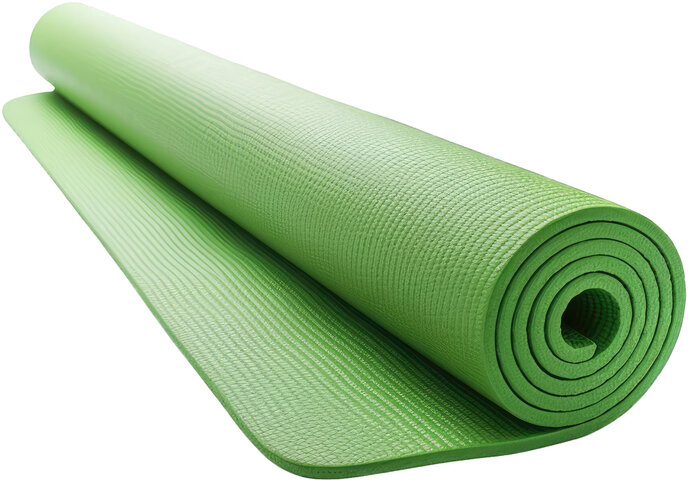Ever wonder what material is flexible like rubber but processes like plastic? Enter TPE plastic, a game-changer in manufacturing.
In this post, we'll explore the properties, types, and applications of TPE plastic. You'll discover how it's processed and modified to meet diverse needs across various sectors.

Understanding TPE Plastic
What is TPE Plastic?
TPE plastic, or Thermoplastic Elastomer, is a unique material that combines the best of rubber and plastic. It's flexible like rubber but processes like plastic, offering a versatile solution for various industries.
TPEs consist of polymer blends or compounds. They have both thermoplastic and elastomeric properties, making them incredibly adaptable.
Unlike traditional rubber, TPEs don't require vulcanization. They can be melted and reshaped multiple times, offering significant advantages in manufacturing and recycling.
How Does TPE Plastic Work?
TPEs differ from thermoset elastomers in their molecular structure. Thermosets have permanent cross-links, while TPEs have reversible ones.
The key to TPE's elasticity lies in its two-phase structure:
Hard thermoplastic phase
Soft elastomeric phase
This structure allows TPEs to stretch and return to their original shape, much like rubber.
Thermoplastic vs. Thermoset Elastomers
| Property | Thermoplastic Elastomers | Thermoset Elastomers |
| Processing | Can be reprocessed | Cannot be reprocessed |
| Melting Point | Yes | No |
| Recyclability | High | Low |
| Chemical Resistance | Varies | Generally higher |
TPEs can be remelted and reshaped multiple times. This feature makes them highly recyclable and sustainable.

Properties of TPE Plastic
TPE plastics are renowned for their unique properties. Let's dive into the various attributes of TPEs.
Mechanical Properties
Hardness Range: TPEs can range in hardness from Shore OO to Shore D, catering to diverse application needs.
Flexibility and Elasticity: TPEs exhibit excellent flexibility and elasticity, withstanding repeated bending without breaking.
Tensile Strength and Elongation: TPEs possess good tensile strength while offering elongation up to 1000% or more.
Abrasion and Tear Resistance: TPEs demonstrate outstanding abrasion and tear resistance, making them suitable for durable products.
Thermal Properties
Temperature Resistance: TPEs can maintain stable performance within a temperature range of -50°C to 150°C.
Glass Transition Temperature (Tg): The Tg of TPEs typically falls between -70°C and -30°C, ensuring flexibility at low temperatures.
Melting Point: TPEs have melting points ranging from 150°C to 200°C, allowing for thermoplastic processing methods like injection molding and extrusion.
Chemical Properties
Chemical Resistance: TPEs exhibit good resistance to various chemicals, such as acids, alkalis, and alcohols.
Solvent Resistance: TPEs have some resistance to non-polar solvents but are susceptible to swelling by aromatic solvents.
Weathering and UV Resistance: With appropriate additives, TPEs can achieve excellent weathering and UV resistance.
Electrical Properties
Electrical Insulation: TPEs are excellent electrical insulators, widely used in wire and cable jackets.
Dielectric Strength: TPEs possess high dielectric strength, meeting the requirements of various electrical applications.
Other Properties
Colorability: TPEs are easily colorable, allowing for the creation of vibrant and visually appealing colors.
Transparency: Certain TPE grades offer excellent transparency, finding widespread use in medical and food industries.
Density: TPEs typically have densities ranging from 0.9 to 1.3 g/cm³, falling between plastics and rubbers.
It's worth noting that different types and grades of TPEs have different aspects of the above properties.
Types of TPE Plastic
TPE plastics come in various types, each with unique properties and applications.
Styrenic Block Copolymers (TPE-S)
Structure and Composition
TPE-S consists of hard styrene mid-blocks and soft end-blocks. Common types include SBS, SIS, and SEBS.
Properties and Characteristics
Wide hardness range
Excellent elasticity
Good transparency
UV and ozone resistant
Common Applications
Adhesives
Footwear
Asphalt modifiers
Low-grade seals
Thermoplastic Polyolefins (TPE-O)
Structure and Composition
TPE-O blends polypropylene or polyethylene with elastomers like EPDM or EPR.
Properties and Characteristics
Common Applications
Automotive bumpers
Dashboards
Airbag covers
Mudguards
Thermoplastic Vulcanizates (TPE-V or TPV)
Structure and Composition
TPV is a mix of polypropylene and vulcanized EPDM rubber.
Properties and Characteristics
High-temperature resistance (up to 120°C)
Low compression set
Chemical and weather-resistant
Hardness range: 45A to 45D
Common Applications
Automotive seals
Bellows
Hoses
Pipe seals
Thermoplastic Polyurethanes (TPE-U or TPU)
Structure and Composition
TPU is formed by reacting diisocyanates with polyester or polyether polyols.
Properties and Characteristics
Excellent abrasion resistance
High tensile strength
Significant elastic elongation range
Resistant to oils and fuels
Common Applications
Caster wheels
Power tool grips
Hoses and tubes
Drive belts
Copolyester Elastomers (COPE or TPE-E)
Structure and Composition
COPE consists of crystalline and amorphous segments, giving elasticity and easy processing.
Properties and Characteristics
Resistant to creep and compression set
Excellent temperature resistance (up to 165°C)
Resistant to oils and greases
Electrically insulative
Common Applications
Vehicle air ducts
Ventilator bags
Dust boots
Conveyor belts
Melt Processable Rubber (MPR)
Structure and Composition
MPR is a cross-linked halogenated polyolefin mixed with plasticizers and stabilizers.
Properties and Characteristics
Common Applications
Polyether Block Amides (PEBA or TPE-A)
Structure and Composition
PEBA consists of soft polyether segments and hard polyamide segments.
Properties and Characteristics
Common Applications
Aerospace components
Cable jacketing
Sports equipment
Medical devices
| TPE Type | Key Properties | Main Applications |
| TPE-S | Wide hardness range, good elasticity | Adhesives, footwear |
| TPE-O | Weather resistant, flame retardant | Automotive parts |
| TPE-V | High-temperature resistant, low set | Seals, hoses |
| TPE-U | Abrasion resistant, high strength | Tool grips, belts |
| COPE | Oil resistant, temperature stable | Air ducts, conveyor belts |
| MPR | UV resistant, high friction | Weather strips, seals |
| PEBA | Solvent resistant, flexible at low temps | Aerospace, cables |
Applications of TPE Plastic
TPE plastics find use in numerous industries due to their versatile properties. Let's explore their key applications:

Automotive Industry
TPEs have revolutionized automotive manufacturing. They're used in:
Interior and Exterior Parts
Dashboards
Door panels
Bumpers
Mudguards
These parts benefit from TPE's durability and weather resistance.
Seals and Gaskets
TPEs excel in creating:
Door seals
Window seals
Trunk seals
They provide excellent sealing properties and withstand temperature fluctuations.
Hoses and Tubes
Fuel lines
Air conditioning hoses
Coolant tubes
TPEs offer flexibility and chemical resistance, ideal for these applications.
Medical and Healthcare
The medical industry relies heavily on TPEs for various applications.
Medical Devices
Surgical instruments
Respiratory masks
Prosthetics
TPEs' biocompatibility and sterilizability make them perfect for these uses.
Tubing and Catheters
IV tubes
Drainage catheters
Feeding tubes
Their flexibility and chemical resistance are crucial here.
Dental Products
Dental polishers
Orthodontic appliances
Bite guards
TPEs provide comfort and durability in dental applications.
Consumer Goods
TPEs have found their way into many everyday products.
Footwear
Shoe soles
Sports shoes
Sandals
They offer comfort, durability, and slip resistance.
Household Items
Kitchen utensils
Shower heads
Toothbrush grips
TPEs provide a soft touch and good grip in these applications.
Toys and Sports Equipment
Action figures
Bike handles
Swimming goggles
Their safety and flexibility make TPEs ideal for these products.
Industrial Applications
TPEs play a crucial role in various industrial settings.
Seals and Gaskets
Pump seals
Valve gaskets
Pipe seals
They offer excellent sealing properties in diverse environments.
Wires and Cables
Cable insulation
Wire coatings
Fiber optic cables
TPEs provide good electrical insulation and flexibility.
Machinery Components
Vibration dampers
Conveyor belts
Rollers
Their durability and shock absorption properties are valuable here.
Other Applications
TPEs find use in several other sectors:
Building and Construction
Roofing membranes
Window seals
Floor coverings
They offer weather resistance and durability in construction.
Packaging
Bottle caps
Food containers
Flexible packaging
TPEs provide sealing properties and are often food-safe.
Agriculture
Irrigation systems
Greenhouse films
Equipment seals
Their weather resistance and flexibility benefit agricultural applications.
| Industry | Key Applications | Benefits of TPEs |
| Automotive | Seals, hoses, interior parts | Durability, weather resistance |
| Medical | Tubing, devices, dental products | Biocompatibility, flexibility |
| Consumer Goods | Footwear, household items, toys | Comfort, safety, grip |
| Industrial | Seals, cables, machinery parts | Chemical resistance, insulation |
| Others | Construction, packaging, agriculture | Weather resistance, versatility |
Processing of TPE Plastic
TPE plastics can be processed using various methods. Let's explore the most common techniques:
Injection Molding
Process Overview
Injection molding is the most popular method for TPE processing. It involves:
Melting TPE pellets
Injecting the molten material into a mold
Cooling and solidifying the material
Ejecting the finished part
Advantages and Limitations
Advantages:
Limitations:
Key Considerations for TPE Injection Molding
Mold Temperature: 25-50°C
Melt Temperature: 160-200°C
Compression Ratio: 2:1 to 3:1
Screw L/D Ratio: 20-24
Proper drying of TPE materials is crucial before processing.
Extrusion
Process Overview
Extrusion is used for producing continuous profiles. The process includes:
Feeding TPE into a heated barrel
Forcing the melted material through a die
Cooling and shaping the extruded product
Advantages and Limitations
Advantages:
Limitations:
Key Considerations for TPE Extrusion
Single-screw extruders with three-section or barrier screws work best for TPEs.
Blow Molding
Process Overview
Blow molding creates hollow parts. The steps include:
Extruding a parison (hollow tube)
Enclosing it in a mold
Inflating it with air to form the shape
Advantages and Limitations
Advantages:
Limitations:
Key Considerations for TPE Blow Molding
Proper melt strength is crucial
Die and parison design affect final part quality
Cooling time impacts cycle efficiency
Other Processing Methods
Compression Molding
Suitable for large, simple shapes
Lower tooling costs than injection molding
Ideal for low-volume production
Rotational Molding
Good for large, hollow parts
Stress-free parts with uniform wall thickness
Long cycle times, but low tooling costs
3D Printing
Rapid prototyping and small-scale production
Complex geometries possible, Popular applications include phone covers, belts, springs, and stoppers.
Limited material options compared to other methods
| Process | Advantages | Limitations | Key Considerations |
| Injection Molding | High production rates, complex shapes | High tooling costs | Proper temperature control |
| Extrusion | Continuous production, cost-effective | Limited shapes | Screw design crucial |
| Blow Molding | Ideal for hollow parts | Limited geometries | Melt strength important |
| Compression Molding | Large, simple shapes | Lower precision | Suitable for low volumes |
| Rotational Molding | Large, hollow parts | Long cycle times | Uniform wall thickness |
| 3D Printing | Rapid prototyping, complex geometries | Limited materials | Ideal for small-scale production |
Each processing method has its strengths. The choice depends on the specific application and production requirements.
Modifications and Enhancements of TPE Plastic
TPE plastics can be modified to enhance their properties.
Compounding and Blending
Blending with Other Polymers
Mixing TPEs with other polymers can improve specific properties:
TPE + PP: Enhances rigidity and heat resistance
TPE + PE: Improves impact resistance and flexibility
TPE + Nylon: Increases toughness and chemical resistance
These blends are often used in automotive and industrial applications.
Addition of Fillers and Reinforcements
Fillers can significantly alter TPE properties:
Glass fibers: Increase strength and stiffness
Carbon black: Improves UV resistance and conductivity
Silica: Enhances tear strength and abrasion resistance
The right filler can tailor TPEs for specific applications.
Compatibilization Strategies
Ensuring good mixing of TPEs with other materials is crucial. Compatibilizers help:
Common compatibilizers include maleic anhydride-grafted polymers.
Chemical Modification
Grafting and Functionalization
Grafting introduces new functional groups to TPEs:
Maleic anhydride grafting: Improves adhesion properties
Silane grafting: Enhances moisture resistance
Acrylic acid grafting: Increases polarity
These modifications expand TPE applications in various industries.
Crosslinking and Vulcanization
Crosslinking can improve TPE properties:
Increases heat resistance
Enhances chemical resistance
Improves mechanical properties
Methods include chemical crosslinking and radiation-induced crosslinking.
Reactive Processing
This technique modifies TPEs during processing:
It allows for unique property combinations not achievable through simple blending.
Surface Modification
Plasma Treatment
Plasma treatment alters TPE surface properties:
Improves adhesion
Enhances printability
Increases surface energy
It's widely used in medical and automotive industries.
Corona Discharge
Corona treatment is effective for:
It's commonly used for packaging and printing applications.
Flame Treatment
Flame treatment offers:
It's often used for automotive parts and industrial components.
Other Modification Techniques
Nanocomposites
Incorporating nanoparticles into TPEs can:
Enhance mechanical properties
Improve barrier properties
Increase flame retardancy
Nanocomposites are emerging in high-performance applications.
Foaming
Foaming TPEs results in:
It's used in footwear, automotive, and packaging industries.
| Modification Technique | Benefits | Common Applications |
| Polymer Blending | Tailored properties | Automotive parts |
| Filler Addition | Enhanced strength, conductivity | Industrial components |
| Chemical Grafting | Improved adhesion, resistance | Adhesives, coatings |
| Crosslinking | Better heat and chemical resistance | High-performance parts |
| Surface Treatments | Enhanced printability, adhesion | Medical devices, packaging |
| Nanocomposites | Improved mechanical and barrier properties | Aerospace, electronics |
| Foaming | Reduced weight, better insulation | Footwear, automotive |
These modifications expand TPE capabilities. They allow for customized solutions across various applications.
Advantages and Disadvantages of TPE Plastic
TPE plastics offer unique benefits but also have limitations.
Advantages
Flexibility and Elasticity
TPEs combine the best of rubber and plastic:
High elasticity, similar to rubber
Excellent flexibility across a wide temperature range
Good recovery after deformation
These properties make TPEs ideal for seals, gaskets, and flexible components.
Processability and Recyclability
TPEs shine in manufacturing and end-of-life scenarios:
Easy to process using standard plastic equipment
Can be melted and reshaped multiple times
Fully recyclable, reducing waste
This recyclability aligns with growing sustainability demands.
Cost-effectiveness
TPEs offer economic benefits:
Lower production costs compared to thermoset rubbers
Shorter production cycles
Reduced energy consumption during manufacturing
These factors contribute to overall cost savings in many applications.
Versatility and Customization
TPEs can be tailored for specific needs:
This versatility allows TPEs to replace many traditional materials.
Disadvantages
Limited Temperature Resistance
TPEs have thermal limitations:
Lower maximum service temperature than some thermoset rubbers
Can soften or melt at high temperatures
May become brittle at extremely low temperatures
This restricts their use in certain high-temperature applications.
Lower Mechanical Strength
Compared to some thermosets, TPEs may have:
These factors can limit their use in high-stress environments.
Susceptibility to Certain Chemicals and Solvents
TPEs can be vulnerable to:
Degradation by certain oils and fuels
Swelling or dissolution in some solvents
Chemical attack in harsh environments
Proper material selection is crucial for chemical-exposed applications.
Potential for Creep and Stress Relaxation
Under constant load, TPEs may exhibit:
Gradual deformation over time (creep)
Loss of sealing force in compressed applications
Dimensional changes under stress
This can affect long-term performance in certain uses.
Sustainability and Environmental Aspects of TPE Plastic
As environmental concerns grow, TPE plastics are gaining attention for their sustainable features.
Recyclability of TPE
TPEs offer excellent recyclability compared to many traditional materials:
Can be melted and reshaped multiple times
Maintain properties after several recycling cycles
Easily blended with virgin material
This recyclability reduces waste and conserves resources. Many TPEs fall under Plastic Recycling Code 7.
Recycling Process:
Collection and sorting
Grinding into small pieces
Melting and reforming
Blending with virgin material (if needed)
Recycled TPEs find use in various applications, from automotive parts to consumer goods.
Bio-based TPE Options
The industry is moving towards more sustainable raw materials:
Examples of bio-based TPEs include:
SEPTON™ BIO-series: Made from sugar cane
Thermoplastic Starch (TPS): Derived from corn or potatoes
Bio-based TPUs: Using plant-based polyols
These materials offer similar properties to traditional TPEs while being more environmentally friendly.
Benefits of Bio-based TPEs:
Renewable resource utilization
Reduced greenhouse gas emissions
Potential biodegradability (for some types)
Comparison with Traditional Plastics and Rubbers
TPEs offer several environmental advantages over traditional materials:
| Aspect | TPE | Traditional Plastics | Thermoset Rubbers |
| Recyclability | High | Moderate to High | Low |
| Energy Consumption | Lower | Moderate | Higher |
| Waste Generation | Less | Moderate | More |
| Bio-based Options | Available | Limited | Very Limited |
Energy Efficiency:
TPEs often require less energy to process compared to thermoset rubbers. This leads to:
Waste Reduction:
TPEs generate less waste during production
Scrap can be easily reprocessed
End-of-life products can be recycled
This contrasts with thermoset rubbers, which are difficult to recycle or reprocess.
Longevity and Durability:
While some TPEs may not match the durability of certain rubbers, they often:
Outlast traditional plastics in flexible applications
Offer good resistance to environmental factors
Maintain properties over multiple use cycles
This longevity contributes to overall sustainability by reducing the need for frequent replacements.
Summary
TPE plastic combines the flexibility of rubber and the processability of plastic. Its properties, like elasticity and durability, make it suitable for automotive, medical, and consumer goods. With various types available, TPE excels in high-performance applications. As industries seek more sustainable materials, TPE’s recyclability and versatility ensure its continued growth in the future of manufacturing. Submit the STL file of the product you want to manufacture, and leave the rest to the professional team at Team Mfg.
Tips: You maybe interested to the all plastics












